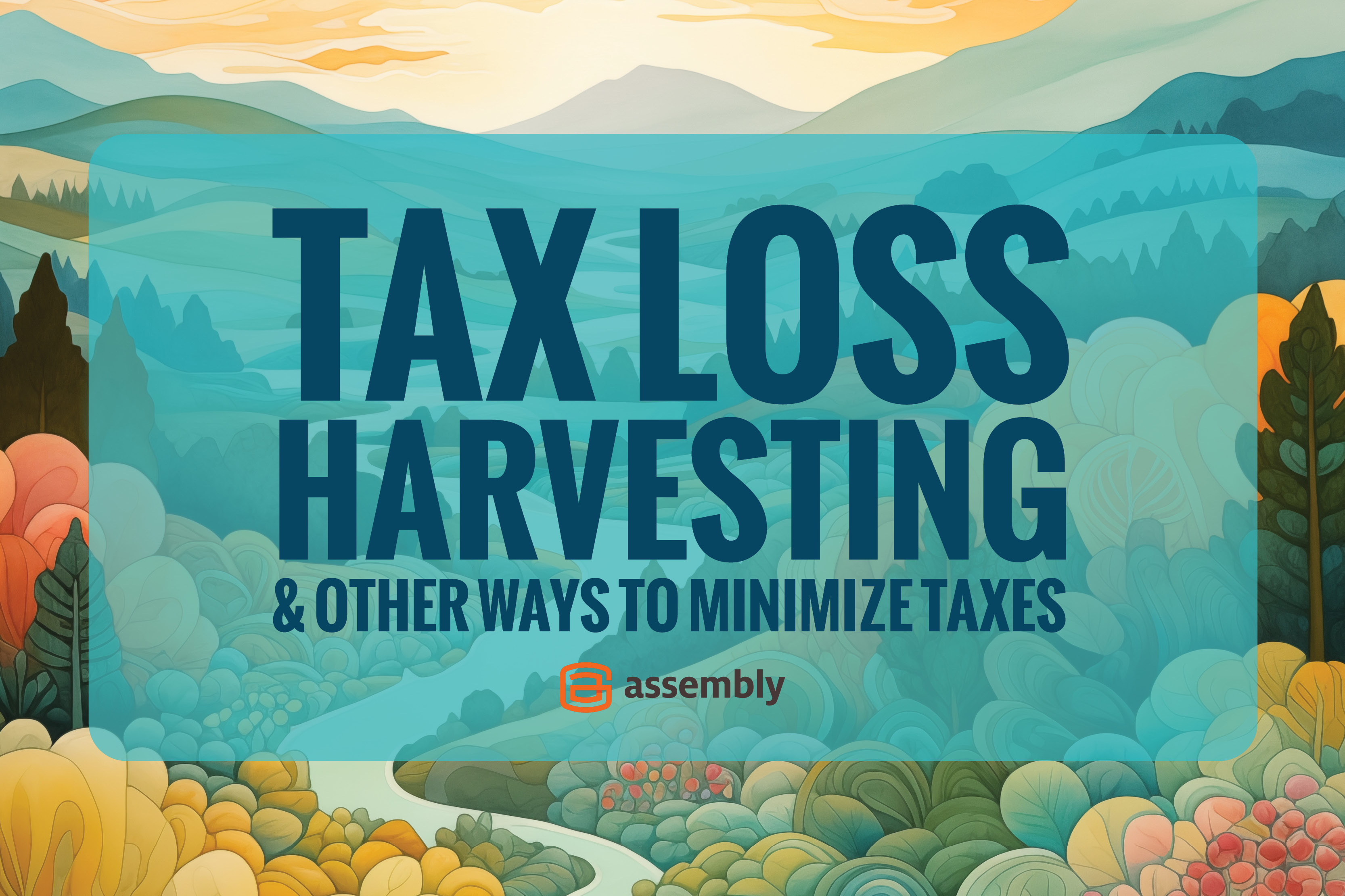Tax Planning Strategies for Non-Taxable Estates
Through the end of 2025, only estates worth more than $13.61 million are subject to federal estate tax. Under the current law, only a tiny percentage...

With the year coming to a close, now is a good time to do an annual review of your financial health. Here are 10 financial planning items to review between now and the end of the year.
1) Review Retirement Account Contributions
For workers who contribute to a 401(k) or 403(b), the maximum contribution for 2024 is $23,000. For employees aged 50 or older, the limit on additional “catch-up” contributions is $7,500.
The 2024 contribution limit for both traditional and Roth IRAs is $7,000 (total across both types of IRAs). Individuals who are 50 or older can make an additional “catch-up” contribution of $1,000, bringing their 2024 limit to a total of $8,000.
If your budget allows, consider taking advantage of the maximum contribution amount to your retirement account in 2024.
2) Check your Flexible Spending Account Balance and Deadline
If you have a Flexible Spending Account (FSA), you are typically required to spend the balance of the account by the end of the year. Some plans have a grace period that extends to March 15th of the following year, and some allow limited rollovers to the following year.
Plan rules and deadlines vary by employer. Consult your employee handbook or workplace benefits department.
3) Take your Required Minimum Distribution
If you are age 73 or older, you must take an annual Required Minimum Distribution (RMD). A financial advisor can help you calculate your RMD.
If this is your first RMD, you have until April 1st of the following year to take your first RMD (in most situations). After the first year, you must take your annual RMD by December 31st. Put another way:
It may not be wise to take two RMDs in the same calendar year because that could push you into a higher tax bracket. If you turn 73 in 2024, consult with your financial and/or tax advisor to determine the best strategy for taking RMDs in 2024 and 2025 in the most tax-efficient manner.
4) Consider Charitable Contributions
If you are over age 70 ½ and plan to donate money to charity, doing so in the form of a QCD may make the most sense. Qualified Charitable Distributions (QCDs) are direct transfers from a retirement account to a qualified charity.
Learn more about reducing taxable income through charitable donations.
5) Review Your Taxable Portfolio for Loss Harvesting Opportunities
Tax loss harvesting is when you sell holdings in your taxable investment accounts that are below the purchase cost in order to book a loss. These realized losses can then be used to offset any realized gains that have accumulated in your taxable account throughout the year. If your realized losses end up exceeding your realized gains, you may be able to offset up to $3,000 of ordinary income for the year.
If you choose to utilize tax loss harvesting, be mindful of the wash sale rule. Basically, if you sell a security at a loss, you are not permitted to buy a “substantially identical security” 30 days before or after the sale or the realized loss will be disallowed. A financial professional can help you determine the best way to implement a tax loss harvesting strategy.
6) Review Beneficiaries and Review Gifting
Review the beneficiary designations of your retirement accounts and life insurance policies. Make any changes as needed to ensure that your named beneficiaries accurately reflect your current estate planning goals. If you don’t regularly review your beneficiaries, you may run the risk of leaving your estate to an ex-partner that you broke up with decades ago!
End-of-year is also a good time to review any gifting strategies and confirm that any planned annual gifts to loved ones have been distributed. You are permitted to make an annual gift of $18,000 ($36,000 for married couples) to an unlimited number of individuals in 2024 without having to file a gift tax form.
7) Review your Estate Planning Documents
Review your will, medical power of attorney, medical directive, general power of attorney, and any investment trusts. Confirm the information in these documents is up-to-date and an accurate reflection of your wishes.
If you own property, double-check whether the property is held in the name of your trust to avoid unnecessary expenses and delays associated with probate. If your property is not owned in the name of your trust, consult your financial advisor for assistance.
8) Check your Credit Reports
The Fair Credit Reporting Act allows you to request a free copy of your credit report once every 12 months. Checking your own credit does not affect your credit scores and can help you detect if you have been the victim of identity theft.
Reviewing your credit report for inaccurate information is a simple step you can take to protect your financial reputation. Others include staying informed about the latest scams and keeping your devices secure.
9) Consider Rebalancing Your Portfolio
Rebalancing your portfolio can help you realign your asset allocation with your risk tolerance. If the stock market has outperformed the bond market since your last portfolio rebalance, the percentage of your portfolio’s dollar value represented by stocks may have drifted above its initial target.
If, for example, you started with an allocation that was 60% stocks and 40% bonds, the proportion of stocks in your portfolio may have increased to 65% due to outperformance versus bonds. In this scenario, you may be taking on more equity risk than you intended. A portfolio rebalance may be helpful to get back to target stock/bond allocation.
Be mindful of any potential tax impacts from placing rebalancing trades and consult with your financial advisor to determine the best rebalancing strategy.
10) Meet with a Financial Advisor and Review or Create Your Financial Plan
Lastly, schedule a meeting with your financial advisor to discuss any recent or upcoming life events such as a new job, an addition to the family, a home or car purchase, or anything else that would have an impact on your financial situation.
If you need help getting started on a financial plan, consider reaching out to Assembly Wealth to start a conversation about your financial situation and create a customized financial plan.
Related Reading:
Assembly Wealth (“Assembly”) is an SEC-registered investment adviser; however, this does not imply any level of skill or training and no inference of such should be made. The opinions expressed herein are as of the date of publication and are provided for informational purposes only. Content will not be updated after publication and should not be considered current after the publication date. We provide historical content for transparency purposes only. All opinions are subject to change without notice and, due to changes in the market or economic conditions, may not necessarily come to pass. Mention of a security should not be considered a recommendation or solicitation to purchase or sell the security, and any securities mentioned may be held by Assembly for client portfolios.
Information presented represents an opinion as of the date published and should not be considered an investment recommendation. Assembly does not become a fiduciary to any listener, reader or other person or entity by the person’s use of or access to the material. The reader assumes the responsibility of evaluating the merits and risks associated with the use of any information or other content and for any decisions based on such content.
Fill out the form to be notified about new articles.

Through the end of 2025, only estates worth more than $13.61 million are subject to federal estate tax. Under the current law, only a tiny percentage...

If you have a parent age 65 or older and at least one dependent child, you’re a member of the sandwich generation. According to Pew Research, about...

There’s no such thing as a one-size-fits-all financial strategy. A solution that works for someone with a diverse portfolio won’t be a good fit for...